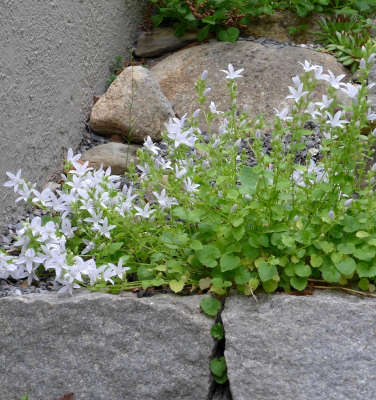

Bellflowers are the quintessential cottage garden flower, with distinctive bell-shaped flower cups (their horticultural name, Campanula, is Latin for “little bell”) belong near the front of border where they can keep company with geraniums, day lilies, and coral bells.
Excellent cut flowers, bellflowers will re-bloom during the summer after you deadhead them. (On the taller varieties, remove individual faded flowers to promote more blooms; when all the flowers are finished, you can cut back the flowering stalks to the base.) There are more than 300 cultivars in the bellflower family— including annual, biennial, and perennial varieties— in a wide selection of colors and sizes; don’t overlook the low creepers such as Dalmatian bellflower (Campanula portenschlagiana syn. C. muralis), which make charming ground covers.